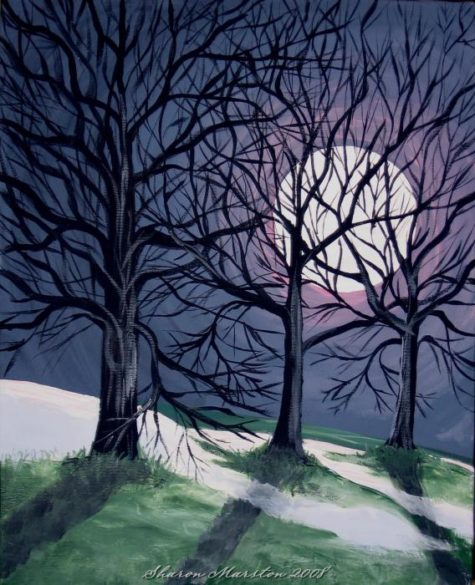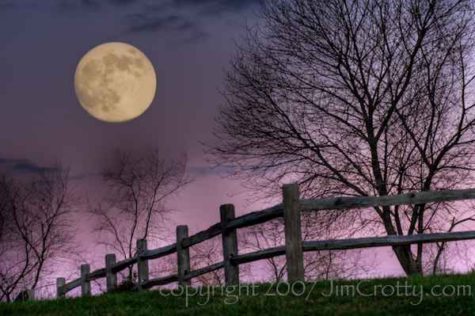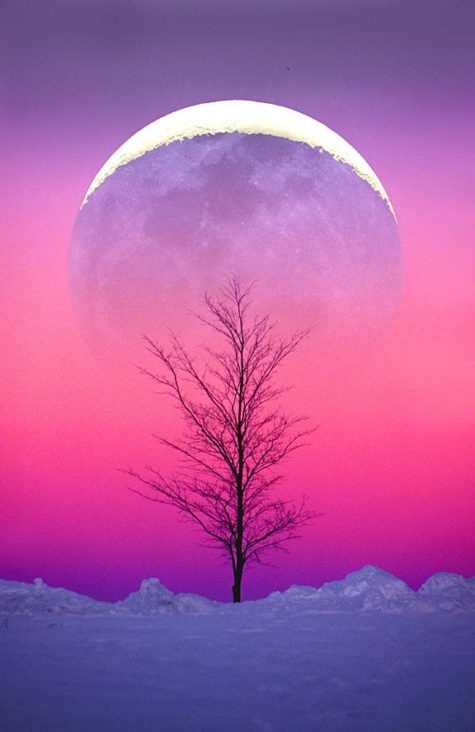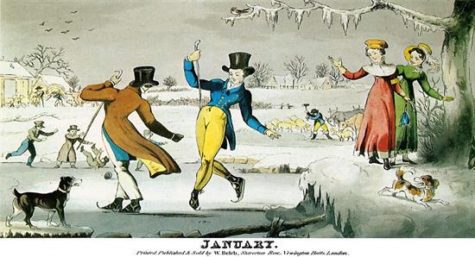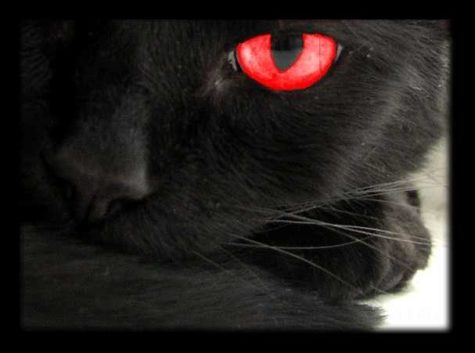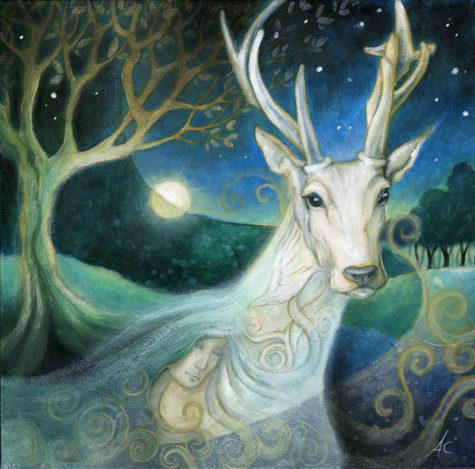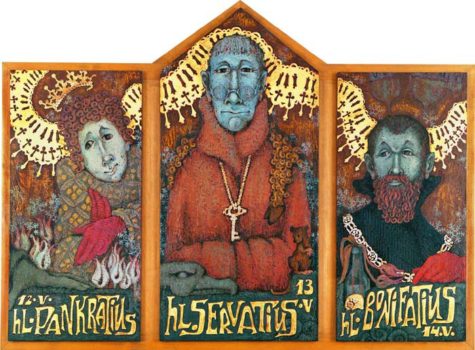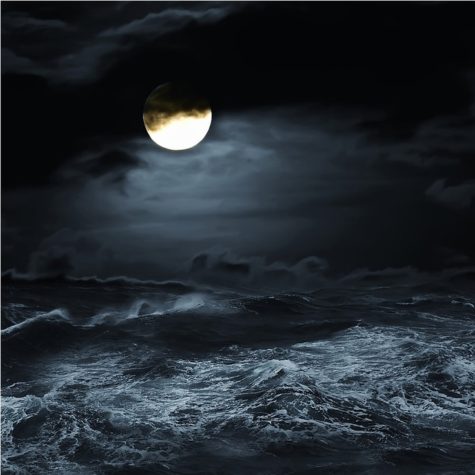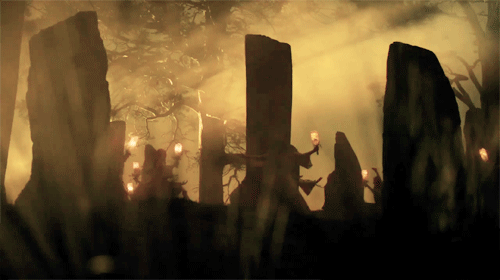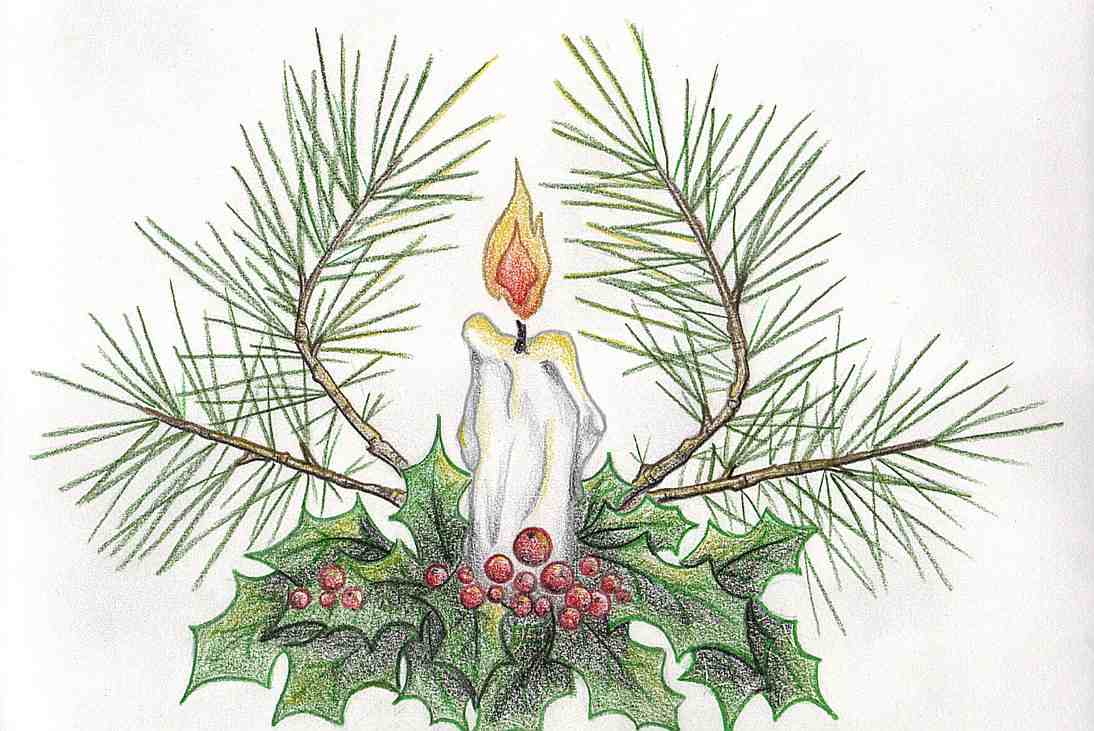Folklore
The last moon phase of the year is the Big Winter Moon in December, also called Long Nights Moon, or the Cold Moon.
Correspondences:
- Colors: White, red, and black
- Gemstones: Obsidian, ruby, serpentine
- Trees: Pine, holly
- Gods: Minerva, Osiris, Athena, Persephone and Hades
- Herbs: Ivy, mistletoe, holly and berries, cinnamon
- Element: Fire
As the days get shorter and Yule approaches with the longest night of the year, we force ourselves to get through the darkness because eventually we will see the sunlight and warmth again. Think about the things in your life that you’ve had to endure. Sometimes, a part of us must die in order to be reborn. Now is the perfect time for spiritual alchemy — time to evaluate your life, and know that you’ll survive the dark times.
If you’ve already put the darkness behind you, take your good fortune and share it with others. When it’s cold outside, open your heart and home to friends and family. Reach out to people who might be suffering from the chill of winter, either spiritually or physically.
source: about.com
What follows is a list (in alphabetical order) of the names given to the December moon. Also listed is the tradition and/or origin of that moon name:
- Aerra Geola ~other
- Ashes Fire Moon ~San Juan
- Before Yule Moon ~Cherokee
- Big Bear’s Moon ~Winnebago
- Big Winter Moon ~Creek
- Bitter Moon ~Chinese
- Cold Moon ~Algonquin, Celtic
- Cold Time Moon ~Mohawk
- Deer Horn Shedding Moon ~Sioux
- Frost Fish Moon ~Passamaquoddy
- Heavy Snow Moon ~other
- Kaitvitjuitk ~Inuit
- Little Finger Moon ~other
- Long Nights Moon ~Algonquin
- Mid-Winter Moon ~other
- Night Moon ~Taos
- Oak Moon ~Janic (full), Medieval English
- Peach Moon ~Choctaw
- Popping Trees Moon ~Sioux, Arapaho
- Real Goose Moon ~Kiowa
- Respect Moon ~Hopi
- Running Wolves Moon ~Cheyenne
- Small Spirits Moon ~other
- Snow Moon ~Cherokee, Janic (dark)
- Turning Moon ~other
- Twelfth Moon ~Dakotah
- Under Burn Moon ~other
- Winter Maker Moon ~other
- Wintermonat Moon ~other
- Wolf Moon ~other
- Yellow Leaves Moon ~other
What follows is a list (in alphabetical order) of the names given to the November moon. Also listed is the tradition and/or origin of that moon name:
- All Gathered Moon ~San Juan, Native American
- Beaver Moon, ~Algonquin, Native American, Colonial
- Corn Harvest Moon ~Taos
- Dark Moon ~other
- Dead Moon ~Janic (dark)
- Deer Antler Shedding Moon ~other
- Deer Rutting Moon ~Cheyenne
- Falling Leaves Moon ~Sioux
- Fog Moon ~other
- Fledgling Raptor Moon ~Hopi
- Freezing River Moon ~Arapaho
- Frosty Moon ~Algonquin, Native American, Colonial
- Geese Going Moon ~Kiowa
- Itartoryuk Moon ~Inuit
- Mad Moon ~other
- Mourning Moon ~Janic (full)
- Oak Moon ~other
- Poverty Moon ~Mohawk
- Snow Moon ~Mediaeval English
- Snowy Morning Mountains Moon ~Wishram
- Storm Moon ~other
- Trading Moon ~Cherokee
- Tree Moon ~Neo Pagan
Source: Everything Under The Moon
November’s Full Moon beckons us to look deep within. With the Sun in Scorpio, the Snow Moon is a potent time to look beyond the obvious. This is an excellent time for dreamwork and lends its energies easily to meditation and divinatory efforts as well as projects that require endings. Use the Snow Moon’s energy for setting magickal goals into motion, as well as planning for the reinvention of your life.Take advantage of this transitional period to set your goals for the future in motion.
~From: 2008 Witches’ Spell-A-Day Almanac
January starts the year with a plethora of fun, frolicsome festivity. The new year in particular is celebrated by at least 170 nations. In terms of energy, January focuses on beginnings. It’s a time for personal renewal, starting any beloved project, and sustaining those things already in progress.Magic for health, protection, and prosperity is particularly augmented by working during this month. It’s also good time for spell work having to do with beginning and conceiving; protection; reversing spells; conserving energy by working on personal problems that involve no one else; getting your various bodies to work smoothly together for the same goals.
Weather Watching:
It is said that whatever the weather is like the first twelve days of January indicates what the weather will be like for the next twelve months. Each day equals one month in succession.
January Birth Signs
(Celtic, Nordic, Astrological, etc)
- Dec 22 to Jan19 – Sun in Capricorn
- Dec 22 to Jan 21 – Sign of the Carnation Flower
- Dec 23 to Jan 1 – Sign of the Apple Tree
- Dec 24 – Jan 21 – Sign of the Birch Tree
- Jan 1 to Jan 11 – Sign of the Fir Tree
- Jan 12 to Jan 24 – Sign of the Elm Tree
- Jan 21 and Feb 19 – Sign of the Orchid Flower
- Jan 21 to Feb 19 – Sun in Aquarius
- Jan 21 – Feb 17 – Sign of the Rowan Tree
- Jan 25 to Feb 3 – Sign of the Cypress Tree
January – the month of new beginnings. January was introduced into the Roman calendar by a legendary king of Rome, Numa Pompilius (c. 715 – 673 BCE), who named it in honor of Janus, the god of doors and openings, beginnings and endings.
Since January is reckoned as the first month of a new year, this connection with the god Janus is appropriate. It is an excellent time to work on putting aside the old and outdated in one’s personal life and making plans for new and better conditions.
According to the old roman calendar July 18 is a “dies ater” or black day, meaning a day of ill omen, or Day of Bad Omens. It marks the defeat of the Romans by the Gauls in the Battle Allia in 390 BC which in turn lead to the sack of Rome by the Gauls.
October 6 is also a “dies ater” or black day as it marks the anniversary of the battle of Arausio (105 BC).
Not much is said about the dos and don’ts or any rituals associated with either day, So, I thought it would be appropriate to post this excerpt from a little book called Signs Omens and Portents in Nebraska Folklore, published in 1933:
Signs of evil portent are among the most common of surviving folk beliefs in Nebraska. In number and currency they rival the popular omens concerned with weather and marriage and they are regarded with perhaps a greater degree of seriousness than signs of the latter type. Such a mass of superstitions having to do with death and bad luck hints at underlying pessimism in human beings. It suggests a preoccupation with the idea of death and a constant dread of inevitable calamity.
Possibly thoughts of melancholy are not so pervasive as the signs might lead us to believe, and it is reassuring to note that open credulity has almost disappeared. The mere survival of the signs, however, is a poignant reminder of a fear-ridden past, and such modern taboos as those against counting cars in a freight train and turning in a funeral car are evidence that superstitions are still in the making.
There is much confusion in the signs. Those which are regarded as bad luck omens by many people have become portents of death to others. The shift may be the result of a natural tendency to make omens specific rather than to leave them merely general indications of good or ill fortune.
Many of the signs seem to be based on a rather obvious association of ideas. Funerals bring to mind the common fate of man. Almost any incident connected with a burial may be looked upon as a sign of another death or an impending disaster. The hooting of an owl has an ominous sound. It causes a shudder, inspires fear, and becomes linked with thoughts of future afflictions. Although the howling dog may not as in legend see the goddess of death, he wakens with his mournful falsetto thoughts of gloom, and quite naturally may become to the superstitious a messenger of approaching distress.
Other signs indicate the connection between ignorance and fear, the tendency to look with dread upon the unknown, and to find in the unusual cause for anxiety. The most commonplace occurrence may become a menace, if it takes place at an unexpected time. When standards of appropriateness are violated, when the incongruous is noted, suspicion and fear are aroused.
In such signs the psychological basis seems obvious enough. In others the roots of belief are more difficult to suggest. Possibly the Romans are responsible for many omens associated with birds; the belief in the ill luck attendant upon salt-spilling may come from the Jewish and pagan use of salt in sacrificial rites, and the fear inspired by breaking a mirror may be traced to the use of mirrors by magicians in sorcery. But the origin of many of the symbols seems lost to us entirely. Like the events they predict, they are obscure, and they are perhaps more interesting because of the element of mystery which surrounds them.
July is normally the month when the new antlers of buck deer push out of their foreheads in coatings of velvety fur. It was also often called the Full Thunder Moon, for the reason that thunderstorms are most frequent during this time. It is known as the Hay Moon or the Meadow Moon because the meadows are at their greatest point of growth in this month, and it is a time for hay-cutting. Other names for this month’s Moon include: Blood Moon, Grain Moon, Green Corn Moon, Herb Moon, Hungry Ghost Moon, Wort Moon.
Native American fishing tribes called it the Sturgeon Moon because sturgeon, a large fish of the Great Lakes and other major bodies of water, were most readily caught during this month. A few tribes knew it as the Full Red Moon because, as the Moon rises, it appears reddish through any sultry haze.
The energies surrounding this full moon are ones of success, happiness, and fulfilment. We are blessed with the first harvest of the season – a reward for all our hard work. For this reason, July’s full moon is also known as the Blessing Moon. Energy moves into creation. Opportunities for self-reliance and confidence, unity and balance abound.
The Moon at this time brings us feelings of being connected. Connection to Spirit encourages us to first recognize blessings in our own lives, and then pay them forward – thus continuing the cycle of positive energy.
Correspondences:
- Colors: Green, silver, blue-gray
- Gemstones: Moonstone, white agate, opals or pearls
- Trees: Ash and oak
- Gods: Juno, Venus, Cerridwen, Athena, Nephthys, Lugh
- Herbs: Mugwort, hyssop, lemon balm
- Element: Water
This is a great time to do divination and dreamwork. Find a way to incorporate the watery energy of the Blessing Moon into your spell crafting and ritual. Enjoy the relaxing feeling of July’s full moon and use it in your personal meditation.
Celebrating the Full Buck Moon:
- Wear shades of green to honor the herb harvest
- Adorn your hair and altar with herbs and greenery
- Burn sage, lavender or rosemary incense
- Prepare herbal tea and lavender or lemon balm cookies
- Bless your herb garden
Collected from various sources
The first (or only) full moon in June is called the Honey Moon. Tradition holds that this is the best time to harvest honey from the hives.
Correspondences:
- Colors: Sun colors — gold, yellow, orange
- Gemstones: Topaz, agate
- Trees: Oak, maple
- Gods: Isis, Cerridwen, Persephone
- Herbs: Parsley, mosses, skullcap, mugwort
- Element: Earth
This is the month where magical workings are well suited to maintaining and enhancing things you already have. Weed your garden, prune the bushes, give your lawn all the tender loving care it needs. Take time to let your personal life blossom as well – focus on things that improve your job or education, as well as your relationships with family and friends.
This time of year, between the planting and harvesting of the crops, was the traditional month for weddings. This is because many ancient peoples believed that the “grand [sexual] union” of the Goddess and God occurred in early May at Beltaine. Since it was unlucky to compete with the deities, many couples delayed their weddings until June.
June remains a favorite month for marriage today. In some traditions, newly wed couples were fed dishes and beverages that featured honey for the first month of their married life to encourage love and fertility. The surviving vestige of this tradition lives on in the name given to the holiday immediately after the ceremony: “The Honeymoon.”
In June, we’re beginning to see some early summer fruits and vegetables (a great time for strawberry crops!), and the days are getting longer and longer. It’s a far cry from the darkness of winter, and we typically try to spend as much time outside as possible. Also known as Lover’s Moon, Long Sun Moon, it’s a time for bonding with friends and family, and forging what connections we can. Nurture your relationships, your garden, your career, and your soul this month.
In pre-historic times, summer was a joyous time of the year for those Aboriginal people who lived in the northern latitudes. The snow had disappeared; the ground had thawed out; warm temperatures had returned; flowers were blooming; leaves had returned to the deciduous trees. Some herbs could be harvested, for medicinal and other uses. Food was easier to find. The crops had already been planted and would be harvested in the months to come.
May 11, 12, and 13 are the feast days of Saints Mamertus, Pancras, and Gervais. These three are known as the Three Chilly Saints not because they were cold during their lifetimes, but because these days bring a brief spell of colder weather in many years, including the last nightly frosts of the spring, and are traditionally the coldest of the month.
English and French folklore (and later American) held that these days would bring a late frost. In Germany, they were called the Icemanner, or Icemen Days, and people believed it was never safe to plant until the Icemen were gone. Another bit of folklore claimed:
“Who shears his sheep before St. Gervatius’s Day loves more his wool than his sheep.”
In Sweden, the German legend of the ice saints has resulted in the belief that there are special “iron nights,” especially in the middle of June, which are susceptible to frost. The term “iron nights” (järnnätter) has probably arisen through a mistranslated German source, where the term “Eismänner” (ice men) was read as “Eisenmänner” (iron men) and their nights then termed “iron nights,” which then became shifted from May to June.
To the Poles, the trio are known collectively as zimni ogrodnicy (cold gardeners), and are followed by zimna Zośka (cold Sophias) on the feast day of St. Sophia which falls on May 15. In Czech, the three saints are collectively referred to as “ledoví muži” (ice-men or icy men), and Sophia is known as “Žofie, ledová žena” (Sophia, the ice-woman).
Alternative Saints:
St. Mamertus is not counted among the Ice Saints in certain countries (Southern Germany, Austria, Northern Italy, Czech Republic, etc.), whereas St. Boniface of Tarsus belongs to them in other countries (Flanders, Liguria, Czech Republic etc.) as well; St. Boniface’s feast day falling on May 14. St. Sophia, nicknamed Cold Sophia (German kalte Sophie) on May 15 can be added in Germany, Alsace (France). In Poland and the Czech Republic, the Ice Saints are St. Pancras, Saint Servatus and St. Boniface of Tarsus.
Related Content:
- A nice little spell, Ice Saint Toxic People Banishing Spell, can be found at The Book of Shadows
Note:
The introduction of the Gregorian Calendar in 1582 involved skipping 10 days in the calendar, so that the equivalent days from the climatic point of view became May 22–25.
Found at: Almanac.com and wikipedia
A Storm moon is, according to weather folklore, the moon which occurs in March during shifting weather patterns in the northern hemisphere.
This is the month when Spring finally arrives, around the time of the Equinox, and we see new life begin to spring forth. As the Wheel of the Year turns once more, heavy rains and gray skies abound — the earth is being showered with the life-giving water it needs to have a fertile and healthy growing season. This is also a time of equal parts light and darkness, and so a time of balance.
Correspondences:
- Colors: Green, yellow, light purple
- Gemstones: Bloodstone, aquamarine
- Trees: Dogwood, honeysuckle
- Gods: Isis, the Morrighan, Artemis, Cybele
- Herbs: High John, pennyroyal, wood betony, apple blossom
- Element: Water
Use this month for magical workings related to rebirth and regrowth. New life is blooming during this phase of the moon, as is prosperity and fertility.
More March moon lore:
As the temperature begins to warm and the ground begins to thaw, earthworm casts appear, heralding the return of the robins. The more northern Native American tribes knew this Moon as the Full Crow Moon, when the cawing of crows signaled the end of winter; or the Full Crust Moon, because the snow cover becomes crusted from thawing by day and freezing at night.
The Full Sap Moon, marking the time of tapping maple trees, is another variation. To the settlers, it was also known as the Lenten Moon, and was considered to be the last full Moon of winter.
It is also called seed moon, moon of winds, crow moon, moon of the snow-blind, and Full Worm Moon.
Source: Unknown
